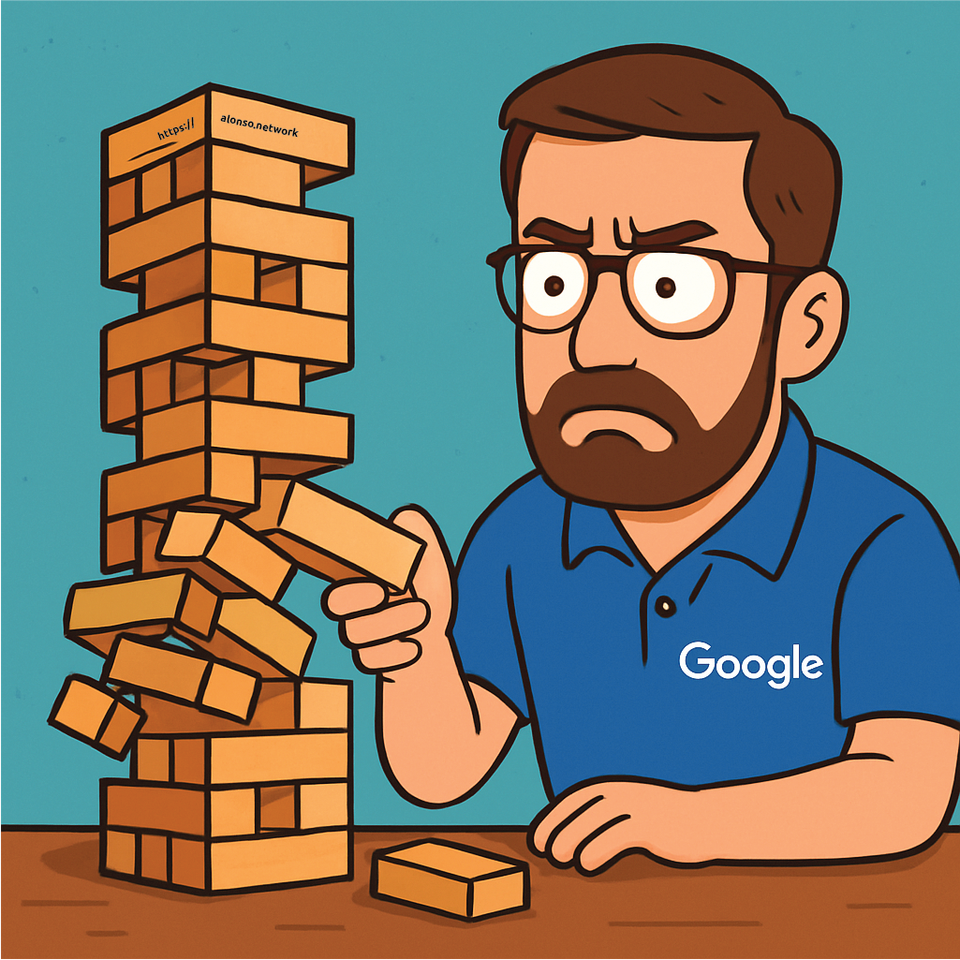Google's $10 Billion Null Pointer

What Google’s Global Outage Teaches Us About Software Discipline and Operational Risk
An executive brief on the forgotten fundamentals of building resilient systems.
On June 12th, 2025, Google Cloud Platform suffered a catastrophic, global outage lasting over seven hours. This wasn’t a regional blip or a slow-loading dashboard. It was a full-scale collapse that disrupted Spotify, Discord, Cloudflare, and anyone else relying on Google’s authentication services.
The root cause?
A null pointer exception.
Let me put that another way: a single unchecked value—missing data—brought down a trillion-dollar ecosystem.
As someone who has spent years evangelizing boring but essential engineering principles like input validation and fault tolerance, I feel equal parts vindicated and horrified. Because if Google, with their legendary infrastructure and limitless resources, can forget to check for null, what does that say about the rest of us?
Anatomy of a Meltdown
Stripped of corporate euphemisms (here’s the official postmortem), the sequence is brutally simple:
- Google deployed an update to their Service Control system—responsible for enforcing quotas and handling authentication.
- The update included no error handling for missing data.
- It also lacked a feature flag to quickly disable the change.
- When malformed data hit the system, it triggered a global cascade: restarts, crashes, and service failure across the board.
And just like that, one unchecked assumption paralyzed a significant slice of the internet.
Spotify? Down. Discord? Down. Cloudflare? Down.
The Banality of Catastrophe
This wasn’t a cyberattack. It wasn’t a bug in some bleeding-edge AI pipeline. It was the digital equivalent of forgetting to lock the front door.
There’s a paradox at work here: the more advanced our systems become, the more vulnerable they are to the simplest oversights. We call it the Paradox of Hyperscale Fragility. And Google just gave us a $10 billion tutorial.
Why NULL Is Evil
This bug traces its ancestry to a concept introduced in 1965: the "null reference." Its inventor, Tony Hoare, later called it his "billion-dollar mistake."
“It has led to innumerable errors, vulnerabilities, and system crashes, which have probably caused a billion dollars of pain and damage in the last forty years.”
A null value isn’t just missing—it’s ambiguous. Did someone forget to enter data? Is the value unknown? Was it optional? Did something break?
That ambiguity poisons systems. It blurs intent, masks bugs, and creates holes where certainty should exist. When you scale that across global infrastructure, the result isn’t just bad code—it’s systemic fragility.
The Safety Net That Wasn’t
Worse still, Google rolled out this change without feature flags—the software equivalent of installing new wiring without a circuit breaker. Feature flags aren’t about experimentation; they’re operational safety valves. They let you reverse mistakes before they become headlines.
Why would Google—a company that pioneered modern release management—skip this? The answer may lie in overconfidence. When engineering cultures prioritize speed or elegance over resilience, safety measures start to look expendable. Until they’re not.
Invisible Dependencies, Visible Failures
Perhaps the most alarming lesson isn’t the null bug itself, but what it revealed about our hidden digital dependencies.
Cloudflare Workers went down because they depended on Google for authentication.
Spotify’s mobile app stopped working.
Discord became unusable.
Your systems may not live on Google Cloud—but they likely rely on something that does. We’ve built an economy atop APIs, identity providers, and backend services whose interconnections are often invisible until they break.
As one analyst put it:
"If the cloud is the new electricity, we need to start treating outages like blackouts, not bugs."
So What Do We Do About It?
If you’re responsible for digital products, infrastructure, or systems design, the response must go beyond hoping your cloud provider does better next time.
Here’s what resilient teams do differently:
1. Validate Everything
Assume nothing. Every system input—whether from a user, API, or partner—must be treated as suspect until verified. Not validating data is not a shortcut. It’s an invitation to disaster.
2. Build for Degradation
When Google’s auth fails, do you grind to a halt? Or do you have a fallback? Cached credentials, degraded functionality, transparent failover—these aren’t luxuries; they’re prerequisites for resilience.
3. Use Feature Flags Strategically
Every critical code path should be gated behind a kill switch. If a rollout goes wrong, you want the power to undo it in one click—not seven hours later when the internet is already on fire.
4. Make Failure Part of Testing
Too many systems only get tested in ideal conditions. What happens if your database returns garbage? If a core dependency goes dark? If a null sneaks through? Simulate these failures before they happen in production.
5. Know Your Dependencies
Every digital system has a hidden map of upstream services and providers. Draw yours. Understand where your critical paths are fragile. Architect for containment.
The Artisan’s Edge
My team and I believe excellence isn’t flashy—it’s foundational. Real engineering rigor looks like error handling, not heroics. It’s not about reacting faster to failure—it’s about preventing it in the first place.
Google forgot to check for null. The world noticed. We noticed too.
And we build so it doesn’t happen to you.
Not all who build are lost. But apparently, some who build forget to validate their inputs.
